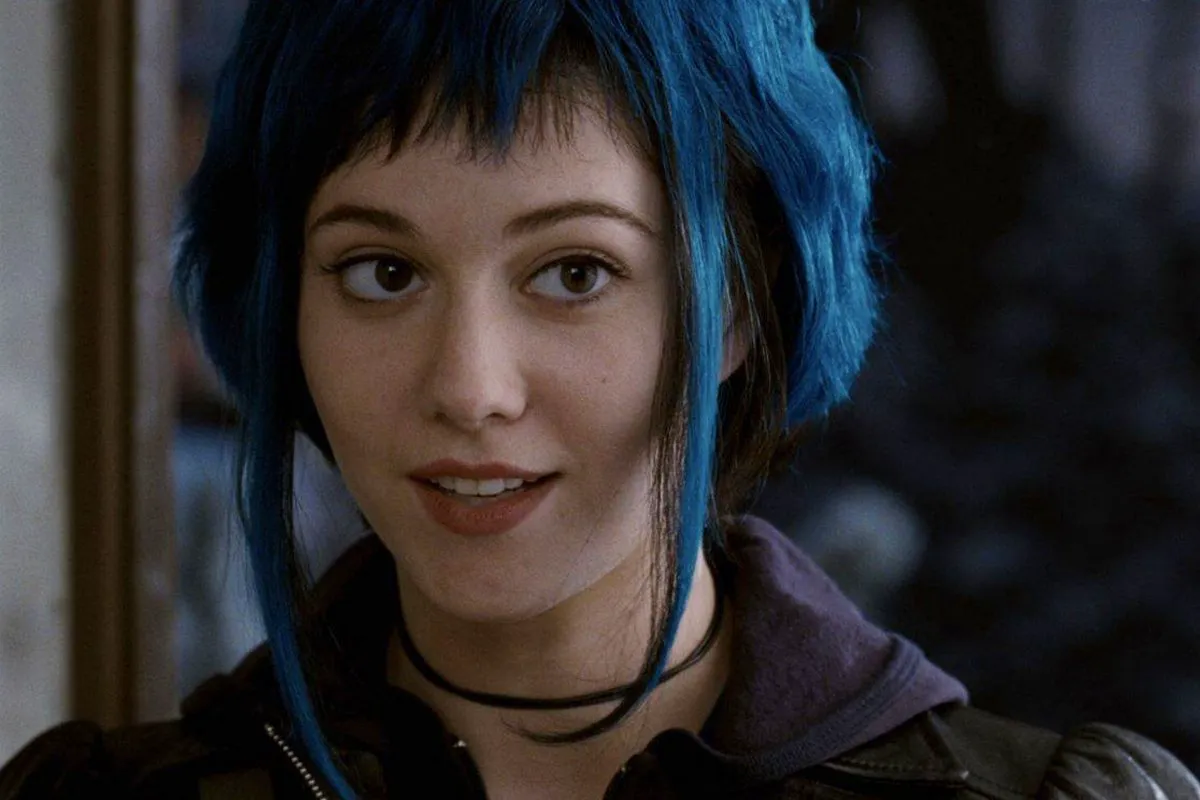Scott Pilgrim vs. the World: A Literal Comic Book Adaptation
“Scott Pilgrim vs. the World,” perhaps the most literal comic book adaptation in history, has already flopped at the American box office, materially proving that its visual sophistication can not only impress but also irritate.
Scott Pilgrim, a young slacker and bassist for the rock band Sex Bob-omb, falls in love with a delivery girl named Ramona. To win her over, Scott must battle her seven “evil exes.” Each fight is a round in a game, with points awarded and levels advanced. And in the finale, a showdown with the boss, the owner of a record label.
A Stylish Opening
Playing with the style of the opening credits has become a good tradition for studios aiming to showcase something extraordinary – right from the start, they begin to wink meaningfully and flirt with you. For “Scott Pilgrim vs. the World” (2010), Universal delivered a sharply fashionable opening in the spirit of an 8-bit game. If you don’t understand why this is cool, you can get up and quietly leave the theater. For those who have experienced the joy of technological downshifting, who can immerse themselves in a meaningless gaming reality and enjoy the pleasant chime of electronic bonus coins, “Scott Pilgrim” will try its best. But not immediately.

Initial Impressions
For the first few minutes, this film looks like a teen comedy about hipsters (who are in their early to mid-20s but look, characteristically, like they’re 17), and Canadian ones at that, with moderately witty dialogues and intrusive visual clutter that invades almost every frame. Animated features – title-card comments, onomatopoeic interjections, frame divisions, and other design and comic book embellishments – seem to mask the helplessness of what’s happening. But over time, the dialogues become sharper, the features become more numerous, the meaning doesn’t increase, but the mood improves rapidly.
A New Trend in Comic Book Adaptations
“Kick-Ass” (2010) recently pulled a similar trick on us, initially pretending to be a school comedy. In comics – the most progressive sphere of modern mass cinema – a new breakthrough and a new trend are emerging. Before pushing the superhero theme towards a mad and merciless triumph of incorrectness and aesthetic freedom, “Kick-Ass” still looked back and somehow tried to make sense of it, relying on cinema in the classical sense. “Scott Pilgrim…” has already survived this triumph, doesn’t try to make sense of anything, and demonstrates that modern mass culture is a wonderful chest with a bunch of funny junk from which you can assemble anything. The essence of the technique on which everything is based is degeneratively simple: Edgar Wright builds the film like a video game with genre-appropriate fights, musical battles, hilarious types of “evil exes” whom Scott knocks out to earn points and advance to the next level. Actually, Wright didn’t invent this move – it’s embedded in the original graphic novel, but it was the cunning Brit who implemented it consistently, brazenly, without restraining himself in his wildest desires.

Edgar Wright’s Style
The director’s wild nature, a man, by the way, not of the hipster generation (he’s 36), manifested itself from his very first film – “Shaun of the Dead” (2004), inspired by the work of George Romero, developed in the crazy police action film “Hot Fuzz” (2007), after which Guy Ritchie’s films seem like the creations of a melancholic, and finally blossomed in “Scott Pilgrim…”. This man, as they say, is high on cinema as such, on cinema that cannot and does not want to fit into the framework of common sense. The game-like nature of the comic book is brought by Wright to the point of absurdity, to the point of madness, to a visual hysteria. He behaves like a crazy geek, obsessed simultaneously with trash, arcade video games, garage rock, and stupid MTV rom-coms, who unexpectedly got the opportunity to speak out properly, showing all his infantile treasures.